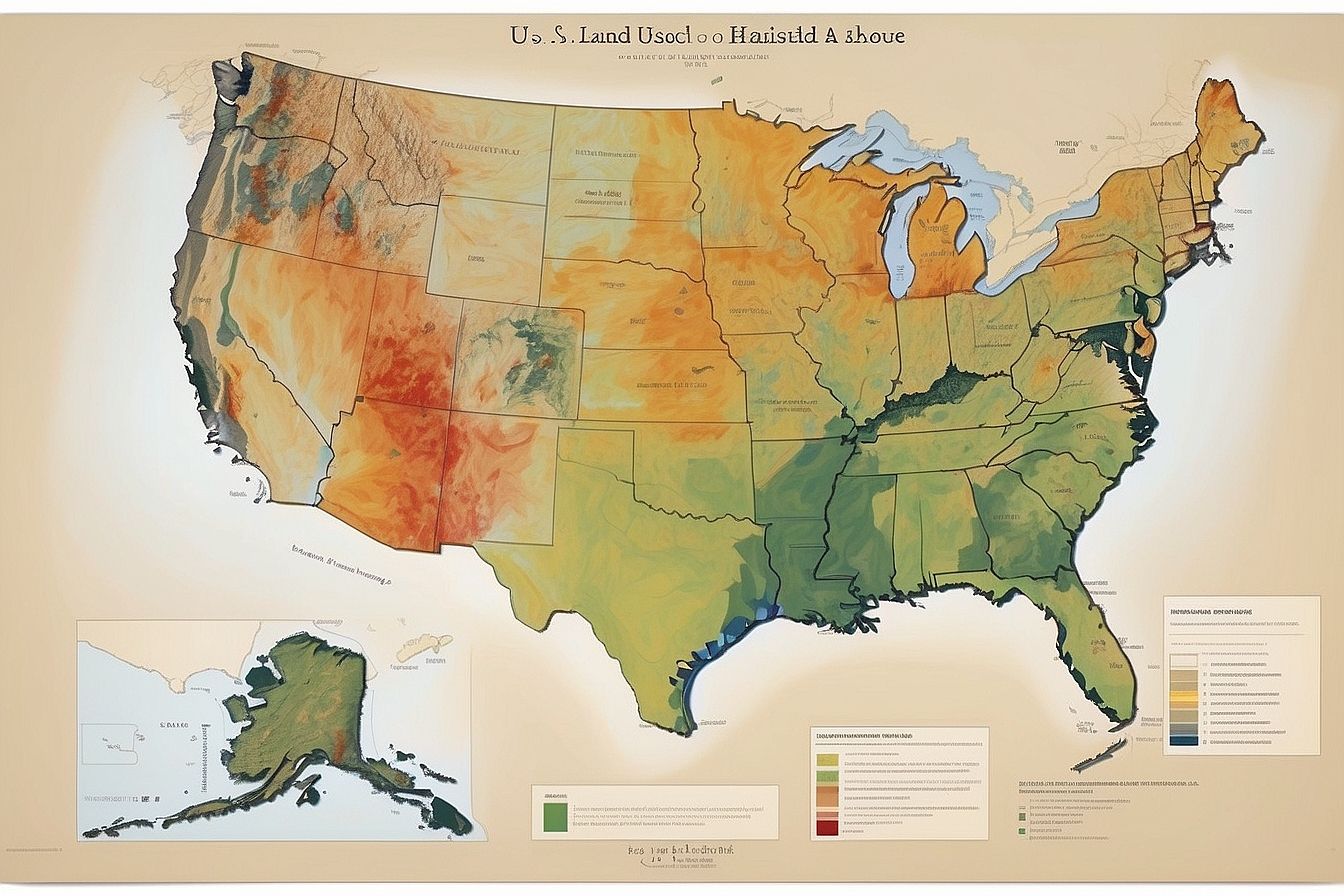We’re all too familiar with that nagging sense of unease when we think about the carbon footprint our planet bears. Just like you, we’ve felt the weight of responsibility – knowing full well that an answer to this quandary quite literally lies underfoot.
After all, soils are veritable carbon vaults, harbouring three times as much of the stuff as there is swirling above us in the atmosphere. Allow us to be your guide through the fascinating dynamics of how our earth’s mantle plays a pivotal role in trapping carbon and thus becomes a stalwart ally against climate change.
Join us and unravel the simplicity behind the marvel that is carbon sequestration; it’s more straightforward than one might imagine!
Key Takeaways
- Land management practices like no – till farming and proper grazing techniques lock away carbon in soils, which helps fight climate change by reducing greenhouse gases.
- Forests serve as major carbon sinks; preserving them along with promoting reforestation and afforestation is vital for continuing to capture atmospheric CO2.
- Deforestation releases stored carbon back into the atmosphere, while land – use changes may reduce ecosystems’ capacity to sequester carbon, underlining the importance of sustainable practices.
- Incorporating trees through agroforestry in agricultural landscapes can increase soil health and fertility besides aiding carbon storage in both forests and grasslands.
- Proactive policies supporting sustainable land management are crucial for integrating effective carbon sequestration methods within various ecosystems.
The Importance of Carbon Sequestration in Land Management
Carbon sequestration in land management plays a crucial role in mitigating climate change and reducing greenhouse gas emissions. It involves practices such as soil-based carbon sequestration and strategic approaches to managing forests and grasslands for carbon capture and storage.
Soil-based carbon sequestration
We play a crucial role in increasing soil-based carbon sequestration. Our actions enhance the absorption of carbon dioxide from the atmosphere into the soil, where it remains stored as organic matter.
This process not only helps mitigate climate change by reducing greenhouse gas emissions but also boosts soil health and fertility.
Through our careful land management practices, including no-till farming, cover cropping, and proper grazing techniques in grasslands and forests, we greatly improve carbon capture.
By protecting these ecosystems and promoting their natural functions, we ensure that more carbon is locked away in the ground rather than contributing to atmospheric pollution.
Strategies for including carbon in forest and grassland management
To include carbon in forest and grassland management, we prioritise reforestation and afforestation efforts. These strategies involve planting trees in deforested areas and converting non-forest land into forested areas to increase carbon sequestration potential. Additionally, sustainable forest management practices such as selective logging can help maintain the balance between carbon storage and timber harvesting.
The Role of Forests in Carbon Sequestration and Storage
Forests play a crucial role in carbon sequestration as they act as carbon sinks, absorbing and storing large amounts of carbon dioxide from the atmosphere. However, deforestation and land-use changes can significantly impact their ability to sequester carbon, highlighting the importance of sustainable forest management practices.
Forests as carbon sinks
Forests act as vital carbon sinks, absorbing carbon dioxide from the atmosphere and storing it in tree biomass, soil, and leaf litter. This process helps mitigate climate change by sequestering large amounts of carbon.
By preserving existing forests and implementing reforestation initiatives, we can enhance their capacity to capture and store carbon effectively, contributing to global efforts for sustainable land management.
Forests also play a crucial role in regulating local climates and supporting diverse ecosystems.
Grasslands are another essential part of the solution when it comes to carbon sequestration. These ecosystems have great potential for capturing atmospheric carbon through advanced grazing management practices that encourage healthy soil biology and enhanced plant growth.
This approach supports sustainable land use while helping control greenhouse gas emissions.
The impact of deforestation on carbon sequestration
Deforestation reduces the amount of carbon that forests can sequester, contributing to increased levels of carbon dioxide in the atmosphere. As trees are cut down and removed, the stored carbon is released back into the air, leading to higher greenhouse gas emissions and exacerbating climate change.
Land-use changes from forested areas to other land types also hamper the natural process of carbon sequestration.
Moreover, deforestation disrupts ecosystems and reduces biodiversity, further impacting soil health and its ability to retain carbon. The loss of trees means there are fewer green plants available for photosynthesis – a crucial biological process where plants absorb carbon dioxide from the air and convert it into plant material.
Land-use changes and their effects on carbon sequestration
Land-use changes significantly impact carbon sequestration. Conversion of forests into agricultural land or urban areas reduces the ability of ecosystems to capture and store carbon dioxide, leading to increased atmospheric concentrations of this greenhouse gas.
Similarly, deforestation disrupts the natural balance, releasing stored carbon back into the atmosphere. Additionally, conversion of grasslands for other uses also disrupts soil carbon sequestration processes.
Furthermore, altered land use affects not only the capacity of ecosystems to sequester carbon but also their resilience in the face of climate change impacts. Such changes can reduce biodiversity and ecosystem services while exacerbating soil erosion and nutrient loss.
Conclusion
In conclusion, preserving forests and grasslands plays a crucial role in capturing and storing carbon. Managing land for carbon sequestration can significantly contribute to mitigating climate change.
By understanding the impact of land-use changes, we can enhance our efforts to reduce carbon emissions and stabilise the climate. Conserving ecosystems such as forests and grazing lands is essential for maintaining a healthy balance in the carbon cycle.
Protecting these vital landscapes is key to achieving long-term sustainability.
FAQs
1. What is carbon sequestration and how does land play a role?
Carbon sequestration is the process of capturing and storing atmospheric carbon dioxide, and the land has a vital role in this through forests, soils, and grazing ecosystems that absorb CO2 from our climate system.
2. Why is it important for climate change mitigation?
The removal of carbon emissions from the atmosphere by land can significantly aid in reducing global warming, making it an essential strategy for climate change mitigation.
3. Can all types of land help with carbon dioxide removal?
Most types of land contribute to the carbon cycle’s balance but especially dense forests and well-managed lands are highly effective at removing CO2 from the air.
4. How does managing grazing lands affect their ability to sequester carbon?
Grazing land ecosystems have the potential for carbon sequestration; proper management practices can enhance their capacity to act as a sink for atmospheric CO2.





